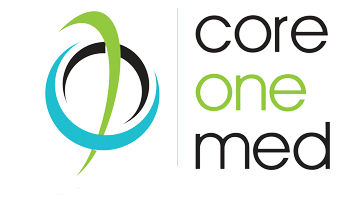ERA in Medical Billing: What You Need to Know
Healthcare providers face significant challenges with paper-based billing systems. Manual processing creates delays, increases costs, and generates errors that impact revenue cycles. Electronic Remittance Advice (ERA) offers a solution that transforms how medical practices handle payment processing.
Most billing departments spend hours each day sorting through paper remittance forms. Staff members manually enter payment data, which leads to mistakes and inefficiencies. ERA eliminates these problems by providing electronic payment information directly from insurance companies.
Electronic Remittance Advice represents a digital approach to payment processing that benefits healthcare providers of all sizes. Understanding ERA basics helps practices make informed decisions about billing system improvements.
What is Electronic Remittance Advice (ERA)?
Electronic Remittance Advice is a digital file that insurance companies send to healthcare providers after processing claims. ERA files contain payment details, claim adjustments, and denial reasons in a standardized electronic format.
ERA files follow the HIPAA-compliant ANSI X12 835 format standard. This standardization ensures all insurance companies use the same digital structure for payment information. Healthcare providers receive consistent data regardless of which payer processes their claims.
ERA files arrive within hours of claim processing, unlike paper remittance advice that takes days to reach providers through mail delivery. This speed improvement directly impacts cash flow and operational efficiency.
Here are the key features that distinguish ERA from traditional payment methods:
- Digital delivery: Files arrive electronically instead of through postal mail
- Standardized format: All payers use the same data structure
- Detailed information: Complete payment explanations and adjustment codes
- Integration capability: Works directly with practice management software
Still drowning in paper remittance forms? ERA implementation by Core One Med cuts processing time by 90%. Call today at 949-507-3011.
ERA vs EFT: Understanding the Difference
Electronic Remittance Advice (ERA) and Electronic Funds Transfer (EFT) serve different purposes in the payment process. ERA provides payment explanation and details, while EFT handles the actual money transfer.
ERA functions like a detailed receipt that explains payment decisions. EFT works like a direct deposit that moves money from payer accounts to provider accounts. Healthcare providers can use ERA without EFT, but combining both systems creates maximum efficiency.
Many practices implement ERA and EFT together to achieve complete electronic payment processing. This combination eliminates both paper explanations and paper checks from the billing workflow.
Breaking Down ERA File Components
ERA files contain structured information that follows a specific format. Understanding these components helps billing staff process payments more efficiently and identify issues quickly.
Essential Parts of Every ERA File
Header Information
ERA files begin with header data that identifies the payer, payment date, and total amounts. This section includes payer contact information, check numbers, and summary totals for the entire file.
Service Line Details
The main body of ERA files contains individual claim information. Each service line shows patient details, procedure codes, billed amounts, paid amounts, and adjustment reasons. This section provides the detailed breakdown that billing staff need for accurate posting.
Summary Section
ERA files end with summary information that totals all transactions in the file. This section helps with reconciliation and ensures all payments and adjustments balance correctly.
Data Structure and Organization
ERA files organize information in a hierarchical structure. The file level contains overall payment information. The claim level shows individual patient transactions. The service level provides specific procedure details.
This organization allows billing software to process information automatically while giving staff the ability to review specific transactions when needed. The structured format ensures consistent data placement across all payers.
ERA isn’t just about going paperless – it’s about getting paid faster. Core One Med’s ERA experts at 949-507-3011 show you how same-day payment posting becomes your new reality.
Decoding ERA Adjustment Codes
ERA files use standardized codes to explain payment decisions. These codes eliminate guesswork and provide clear reasons for claim adjustments or denials.
Group Codes: The Big Picture
Group codes indicate who is responsible for claim adjustments. These codes help billing staff understand whether adjustments result from contractual agreements, patient responsibility, or other factors.
Code
Meaning
Responsibility
CO
Contractual Obligation
Insurance contract terms
PR
Patient Responsibility
Patient payment required
OA
Other Adjustments
Various administrative reasons
Common Reason Codes
Claim Adjustment Reason Codes (CARCs) provide specific explanations for payment adjustments. Understanding common codes helps billing staff process payments faster and identify patterns in claim processing.
- CARC 1: Deductible amount - Patient has not met annual deductible
- CARC 2: Coinsurance amount - Patient owes percentage of allowed amount
- CARC 3: Copayment amount - Patient owes fixed copayment fee
- CARC 45: Charges exceed fee schedule - Billed amount higher than allowed amount
Remark Codes: Additional Context
Remittance Advice Remark Codes (RARCs) provide supplementary information about claim processing. These codes often include instructions for resubmission or requests for additional documentation.
Remark codes help billing staff understand next steps for denied or adjusted claims. Some codes indicate temporary issues that resolve automatically, while others require specific actions from the provider.
How ERA Transforms Your Revenue Cycle
ERA implementation creates measurable improvements in billing efficiency and financial performance. These benefits extend beyond simple time savings to include cost reduction and accuracy improvements.
Processing Speed Improvements
Faster information delivery improves cash flow by reducing the time between claim submission and payment posting. Billing staff can identify and resolve issues more quickly, which accelerates the entire revenue cycle.
- Traditional Processing Timeline: 7-14 days from claim processing to payment posting
- ERA Processing Timeline: Same day or next day payment posting
Cost Reduction Through Automation
Manual payment posting costs approximately $3-5 per transaction when staff handle paper remittance advice. ERA reduces this cost to under $1 per transaction through automated data transfer.
A practice processing 1,000 payments monthly can save $2,000-4,000 annually through ERA implementation. These savings result from reduced labor costs, eliminated postage expenses, and decreased paper storage requirements.
Core One Med has documented billing cost reductions of up to 40% for practices that properly implement ERA systems.
Accuracy and Error Prevention
Manual data entry creates errors in 5-10% of transactions. ERA reduces error rates to under 1% by eliminating manual transcription of payment information.
Fewer errors mean less time spent on corrections and resubmissions. Staff can focus on exception handling and complex cases instead of routine data entry tasks.
Getting Started with ERA Implementation
Successful ERA implementation requires careful planning and systematic execution. Following a structured approach helps practices avoid common pitfalls and achieve better results.
Pre-Implementation Assessment
Before implementing ERA, practices should evaluate their current billing processes and technology infrastructure. This assessment identifies potential challenges and helps create realistic implementation timelines.
Key Assessment Areas:
- Current practice management software capabilities
- Monthly claim volume and payment processing workload
- Staff technical skills and training requirements
- Payer mix and ERA availability from major insurance companies
Choosing ERA Software Solutions
ERA software varies significantly in features, integration capabilities, and cost. Practices should evaluate options based on their specific needs and existing technology investments.
Essential Features to Consider:
- Automatic file retrieval from multiple payers
- Integration with existing practice management systems
- Exception reporting for unusual transactions
- Audit trails for compliance requirements
- User-friendly dashboards and reporting tools
Implementation Process
ERA implementation typically follows a phased approach that minimizes disruption to daily operations. Starting with high-volume payers provides the greatest immediate impact.
Phase 1: System Setup
(Week 1-2) Install and configure ERA software, establish payer connections, and test file processing capabilities.
Phase 2: Staff Training
(Week 3-4) Train billing staff on new processes, create documentation, and establish quality control procedures.
Phase 3: Go-Live
(Week 5-6) Begin processing live ERA files with close supervision and support.
Phase 4: Optimization
(Week 7-8) Fine-tune processes, address issues, and expand to additional payers.
Common ERA Challenges and Solutions
ERA implementation can present various challenges that require proactive management. Understanding these potential issues helps practices prepare effective solutions.
Technical Integration Issues
Many practices use multiple software systems for different functions. Integrating ERA processing with existing scheduling, billing, and accounting systems can create technical challenges.
Solution Approach: Choose ERA software with proven integration capabilities. Consider upgrading to unified practice management systems if integration proves too complex or expensive.
Staff Adaptation Difficulties
Billing staff may resist changes to established workflows. Fear of technology and concern about job security can create implementation barriers.
Solution Strategy: Involve staff in the selection process, provide comprehensive training, and emphasize how ERA eliminates tedious tasks rather than replacing people. Start with enthusiastic team members who can become internal champions.
Data Security and Compliance
ERA files contain protected health information that requires careful security measures. HIPAA compliance and data breach prevention are critical concerns.
Security Requirements:
- HIPAA-compliant software and data handling procedures
- Encrypted file transmission and storage
- Access controls and audit logging
- Regular security assessments and staff training
High-Volume Processing Management
Large practices may process thousands of ERA files daily. Manual review of every transaction becomes impractical at high volumes.
Automation Strategy: Implement automated exception reporting that flags unusual transactions for human review. Focus staff attention on exceptions while allowing routine transactions to process automatically.
ERA vs Traditional Paper Billing Comparison
Comparing ERA with traditional paper-based billing demonstrates the significant advantages of electronic processing across multiple performance metrics.
Performance Factor
Paper Billing
ERA Processing
Processing Time
7-14 days
Same day
Error Rate
5-10%
Under 1%
Cost per Transaction
$3-5
Under $1
Storage Requirements
Physical filing space
Digital storage
Environmental Impact
High paper consumption
Minimal resources
Daily Staff Time
2-3 hours
30 minutes
Reconciliation Effort
Manual matching
Automated
The comparison shows ERA advantages in every measured category. These improvements translate directly into operational efficiency and cost savings.
Advanced ERA Strategies for Revenue Optimization
Experienced ERA users can implement advanced strategies that maximize the benefits of electronic payment processing. These techniques go beyond basic implementation to achieve superior results.
Denial Management Through Analytics
ERA files contain valuable data about claim denials and adjustments. Analyzing this information helps practices identify patterns and prevent future denials.
Key Analytics to Track:
- Most frequent denial reasons by payer and provider
- Seasonal variations in denial patterns
- Coding errors that generate repeated denials
- Payer-specific processing requirements and preferences
Performance Metrics and KPI Tracking
Successful ERA implementation requires ongoing measurement and optimization. Key performance indicators help practices monitor progress and identify improvement opportunities.
Critical Metrics:
- Days in Accounts Receivable (AR)
- Clean claim rate (percentage paid on first submission)
- Collection efficiency (collected amount vs. billed amount)
- Payment posting accuracy and speed
Core One Med clients typically achieve 20-30% improvement in these metrics within six months of ERA implementation.
Coordination of Benefits Automation
Patients with multiple insurance plans require coordination of benefits processing. ERA files provide information that enables automated secondary billing.
Primary insurance ERA data automatically triggers secondary claim generation with appropriate adjustments. This automation reduces manual work and accelerates payment from secondary payers.
Let Core One Med handle what we do best while you focus on patients. Call 949-507-3011 to start the partnership that changes everything.
The Future of ERA Technology
ERA technology continues evolving with new capabilities that further improve billing efficiency and accuracy. Understanding these trends helps practices prepare for future opportunities.
Artificial Intelligence Integration
AI technology will soon predict claim denial likelihood before submission. Machine learning algorithms will analyze historical ERA data to identify patterns that indicate potential problems.
Predictive analytics will help practices correct coding errors and documentation issues before claims reach payers. This proactive approach will increase clean claim rates and reduce denial management workload.
Real-Time Processing Capabilities
Future ERA systems will process payments in real-time rather than batch mode. Instant payment notification will further accelerate cash flow and enable immediate issue resolution.
Real-time processing will also enable dynamic pricing and immediate eligibility verification that adjusts billing based on current patient benefits and coverage.
Enhanced Reporting and Analytics
Advanced analytics platforms will provide deeper insights into revenue cycle performance. Predictive modeling will help practices optimize payer mix, service offerings, and operational efficiency.
These tools will identify which payers provide the fastest payment, which services generate the highest margins, and which processes create the most efficiency gains.
Frequently Asked Questions
Is ERA mandatory for healthcare providers?
ERA is not legally required, but many insurance companies offer incentives for electronic processing. Some payers prioritize ERA claims for faster processing and payment.
How does ERA implementation affect patient billing?
ERA speeds up the entire billing cycle, which means patients receive statements faster and more accurately. Improved cash flow also helps practices offer better payment options and customer service.
What happens when ERA data doesn't match bank deposits?
Discrepancies occasionally occur due to timing differences or processing errors. Quality ERA software includes reconciliation tools that identify and help resolve these issues quickly.
Can small practices benefit from ERA implementation?
Yes, even single-provider practices can achieve significant benefits from ERA. The time savings and accuracy improvements scale proportionally with practice size.
How long should practices retain ERA data?
ERA files should follow the same retention requirements as other billing records. Most practices maintain ERA data for 7-10 years to support audits and compliance requirements.
Implementation Action Plan
Practices ready to implement ERA should follow a systematic approach that ensures successful adoption and maximum benefits.
Week 1-2: Assessment and Planning
- Evaluate current billing processes and technology
- Research ERA software vendors and capabilities
- Calculate potential cost savings and ROI
- Create project timeline and assign responsibilities
Week 3-4: Vendor Selection and Setup
- Choose ERA software based on practice requirements
- Install and configure software systems
- Establish connections with major payers
- Create test environment for staff training
Week 5-6: Training and Testing
- Train billing staff on new processes and software
- Process test ERA files to verify system functionality
- Develop quality control procedures and documentation
- Create backup plans for system issues
Week 7-8: Go-Live and Optimization
- Begin processing live ERA files with close supervision
- Monitor results and adjust processes as needed
- Expand to additional payers based on initial success
- Measure performance improvements and document benefits
Core One Med provides comprehensive implementation support to ensure smooth transitions and optimal results for healthcare practices adopting ERA technology.
Making the Strategic Decision
ERA implementation represents a strategic investment in practice efficiency and financial performance. The technology eliminates manual processes, reduces costs, and improves accuracy across the entire revenue cycle.
Healthcare practices that delay ERA adoption miss opportunities for immediate improvements in cash flow and operational efficiency. The learning curve is manageable, and the benefits begin appearing within weeks of implementation.
Modern billing operations require electronic processing to remain competitive and efficient. ERA provides the foundation for advanced revenue cycle management that positions practices for future growth and success.
The question is not whether to implement ERA, but how quickly practices can begin realizing these significant operational and financial benefits.
Implement ERA Today: 949-507-3011









